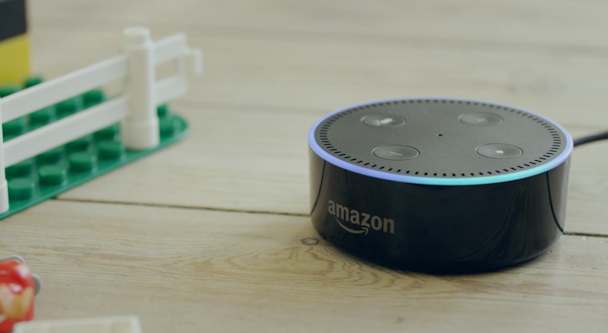In search of the right formula to monetize smart speakers
When it comes to monetizing content on two-way smart speakers like Google Home and Amazon’s Alexa, it’s still early days. As an industry, there are far more questions than answers regarding the right content and ad formats to make it work. But there is one thing we know for sure: for smart speakers to stick around for the long term, we will need to find the right formula for monetization. The producers of these speakers — even Apple, which is traditionally allergic to advertising — understand this point all too well.

Megaphone question the perks of creating short-form content on smart speakers / Lego
The need to monetize the growing smart speaker audience is prompting a number of exciting experiments these days – among publishers and advertisers alike. The beauty of the nascent smart speaker monetization space is that so many others have come before it, and each one is rife with lessons for the platforms, publishers and advertisers in this space. With history as our guide, it would appear that the best bet for the future of smart speaker content and monetization lies in short-form content.
The allure of short-form content
Today, most audio content creators — typically podcasters — are creating long-form content for consumption on mobile devices and desktop. That’s also the typical content experience that creators are trying to translate to the smart speaker platform, but the fit with consumption patterns on these devices isn’t perfect.
The transient way in which people consume content on their smart speakers suggests that there is a significant untapped opportunity within the short-form audio space for smart speakers. We saw this in the video realm, where bite-sized, snackable pieces of content quickly became the preferred mode of consumption by users. Upon this realization, publishers and advertisers hurried to fill the demand and reach these audiences, giving rise to the robust short-form video content and advertising ecosystem that attracts billions in ad revenue today.
Among its many experiments, the audio industry is now seeing a number of players beginning to dabble in the short-form content experiments to see how they resonate across platforms. At the same time, we’re seeing the industry itself make real progress when it comes to giving creators the tools they need to get short-form content right. In some cases, it’s as simple as slicing up longer-form content for short-form exposure, much as is often done in the video space. In time, as creators dial in ideal lengths per platform, we can expect to see creation efforts themselves shift to short-form considerations.
Potential beyond smart speakers
Audio content creators’ forays into short-form content show promise beyond just two-way speakers like Alexa and Google Home. As with short-form video, short-form audio is a strong fit when it comes to sharing through platforms like Facebook and Twitter. It’s going to take a little while for podcasters to dial in their short-form formulas. But when this format hits on two-way speakers, it will be directly translatable to other social and digital platforms.
Along with the tremendous investment and growth over the past 10 years in the short-form video format, we’ve also seen a lot of turbulence. Social video publishers have been notably affected by continued algorithm changes at the social platforms, but investment continues for a very good reason: the value proposition is still valid. Content and creative that can perform across multiple distributed channels with different format requirements will extend monetization opportunities for audio publishers and open new efficient exposure opportunities for advertisers. Short form is built for that.
It’s an exciting time in the audio space, as platforms, publishers and advertisers alike search for the right formula that aligns with audience behavior. Ultimately, the monetization of the smart speaker space will be key to fueling the industry’s momentum. Luckily, with history as our guide, the audio industry has the opportunity to get it right from the start.
Matt Turck, CRO at Megaphone.
